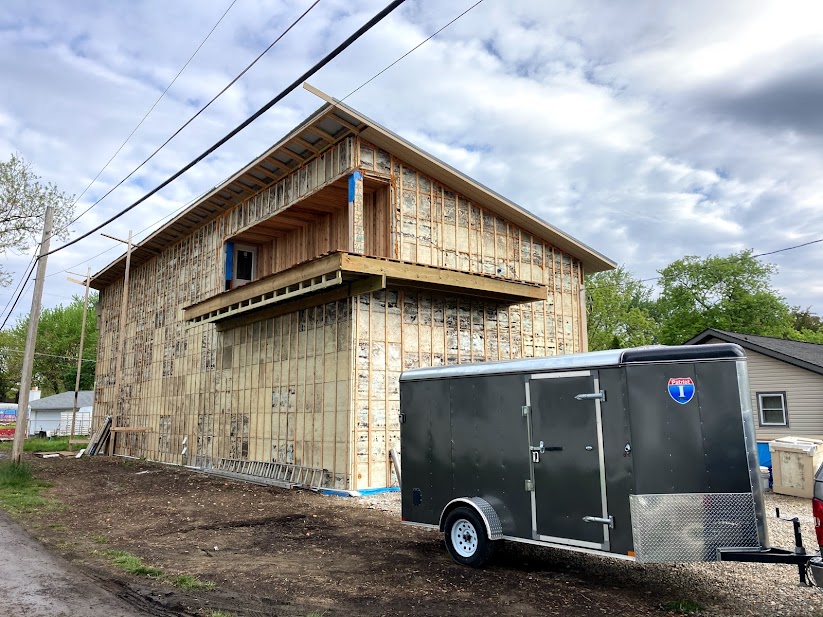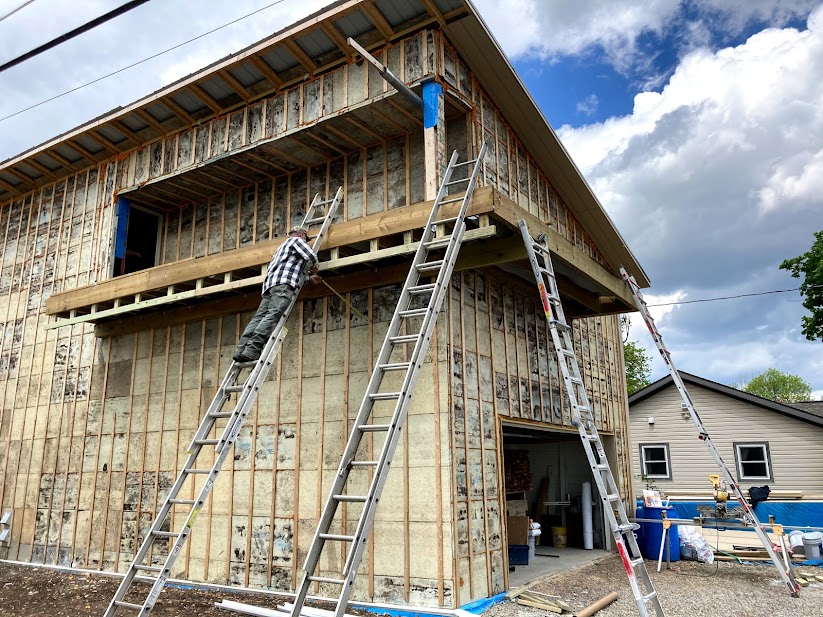Hey all! Finally getting back to the blog. It has been a busy few months finishing the house, moving in in mid-September and now getting into the holiday season. That said, I still want to go back and document the steps of the process for those interested. This post is going to be all about my rainscreen.
What is a Rainscreen?
A rainscreen is a very simple, yet important, component of a wall assembly. It is a detail that holds the siding away from your house wrap to create a capillary break and allow drainage and evaporation.
There are many products available for a rainscreen but I chose the simple pine 1×3. I was able to purchase bundles of these furring strips cheaply at the home store. Working with wood is also more fun than other products. (Wood is Good!)

Installing my Rainscreen
These wood strips were nailed on all my exterior walls 16” on center. They were nailed on with 5” galvanized pole barn nails. These massive dogs were needed because I had to go through the furring strip, two layers of foam, and then into my 2×8 tongue and groove pine. Because I have a continuous 1 ½ thick wall, I could nail the furring strips anywhere, so it made it easy not searching for studs. The 1×3 is also utilized in holding the foam to the wall and providing a nailer for the cladding. These wood strippers are working double duty for the same pay.
Why Have a Rainscreen?
Most houses don’t have a rainscreen. But the rainscreen will make my siding last much longer. My exterior cladding is an engineered wood lap siding. Wood is a reservoir cladding meaning that it holds water unless it has the ability to dry out. The ¾” air space behind the cladding allows the wood to dry out from the backside when it gets wet, and it will get wet. No amount of caulking will keep water completely out of a wall assembly. If you don’t have the drainage plane behind the wood, it will stay wet longer and try to dry to the outside. So what is the problem with this?

Most claddings get painted and repainted when the wife changes her mind. The paint blocks the vapor drive and slows drying. The paint then begins to peel, bubble, and prematurely fail. If it dries to the back, the paint stays fresh and that cash stays in your pocket.
Rainscreens provide a highway for moisture movement. I mean seriously, is a highway or gravel road faster? Water needs to exit fast or you get dirty Mike and his moldy buddies moving in to wreak havoc.

I have an opening at the bottom and top of my siding for optimum airflow and drying. Any water that gets through the cladding will fall down the cavity and out. The water vapor will have the ability to escape out the top.
In conclusion, rainscreens are good.
Cheers and Build On!
